Situated between the enchanting towns of Göreme and Uçhisar, Pigeon Valley is one of Cappadocia’s most captivating viewpoints—a place where sweeping rock formations, rich history, and timeless landscapes come together. This iconic valley owes its name to the thousands of pigeons that have called its cliffs and crevices home for centuries. Local farmers once relied on these birds for their nutrient-rich droppings, which were collected to fertilize the region’s challenging volcanic soil. Today, while agriculture is less dependent on pigeon manure, the birds remain an enduring part of the valley’s identity.
From the lookout point, you’re treated to panoramic views of Cappadocia’s signature fairy chimneys, wave-like ridges, and intricate rock faces carved by centuries of wind and water. It’s a view that seems to stretch endlessly, with Uçhisar Castle rising proudly in the distance and the valley floor winding like a natural pathway through the heart of this geological wonder.
If you’re visiting as part of Cappadocia’s famous Green Tour, you’ll likely find Pigeon Valley included on the itinerary, alongside highlights like the Ihlara Valley, Derinkuyu Underground City, and Selime Monastery. This is the Green Tour we did, including a stop at Pigeon Valley. It offers a seamless way to take in the region’s diversity, combining history, culture, and natural beauty in a single day.
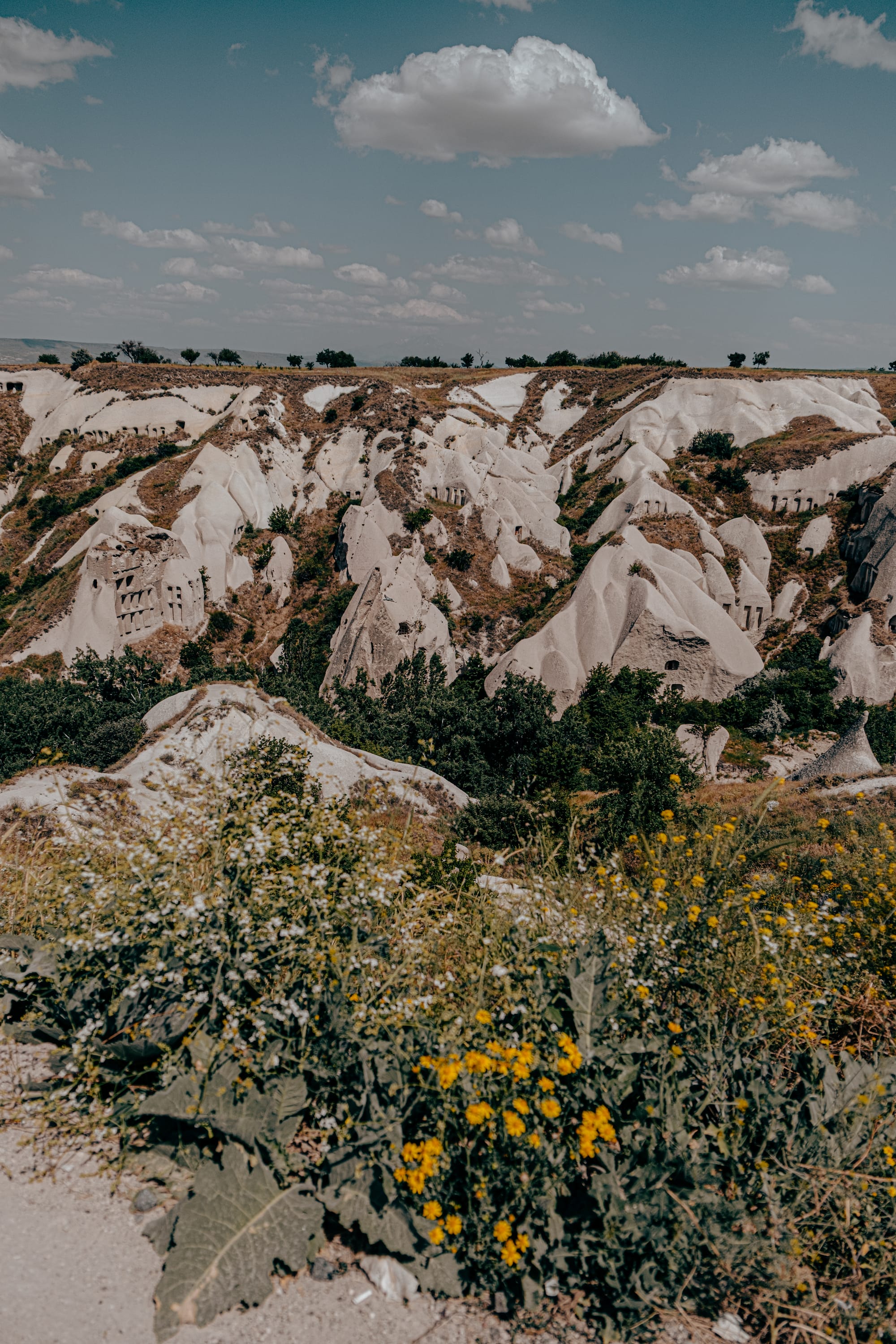
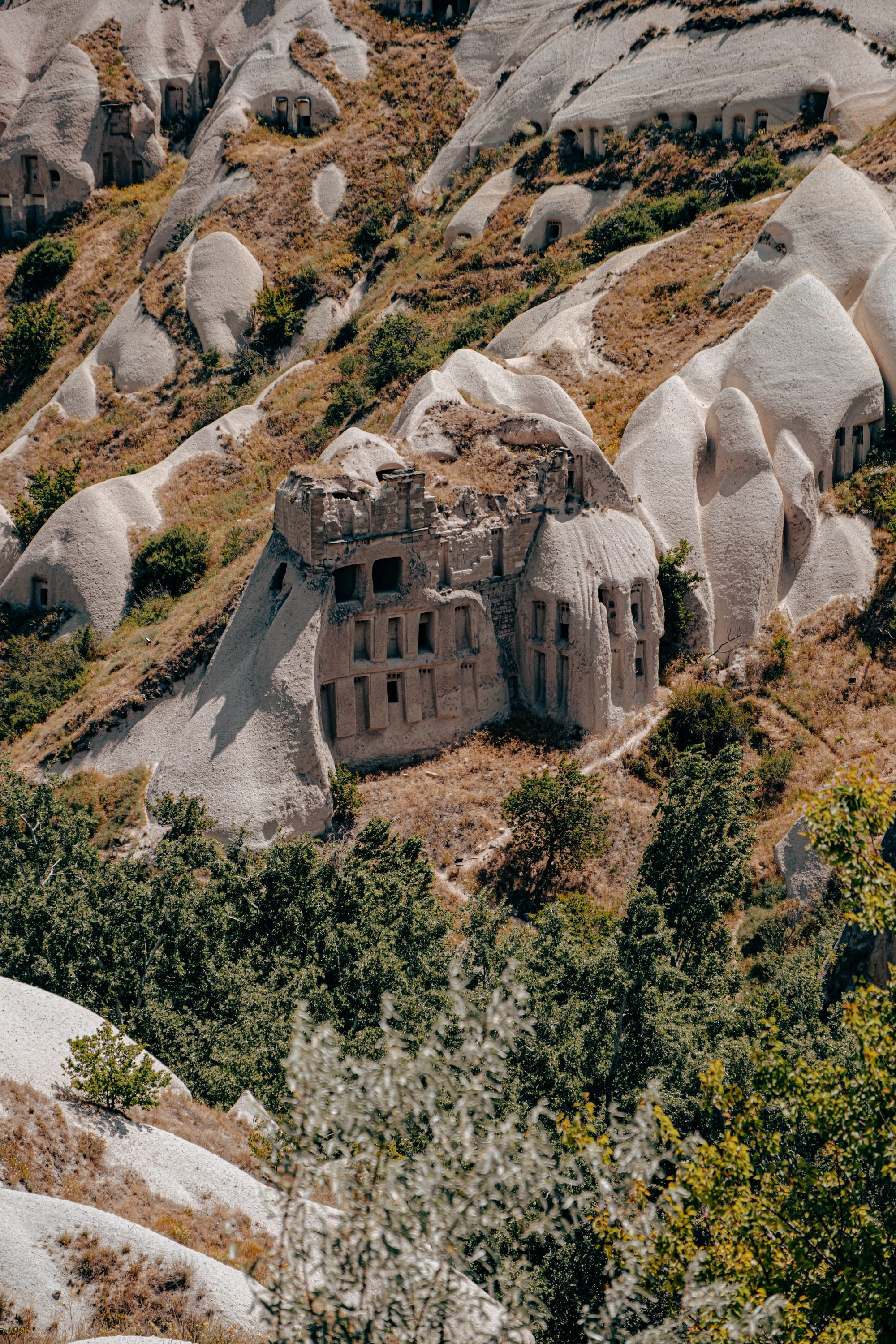
Sweeping valley views showcasing the natural curves and textures of Cappadocia’s landscape
Pigeon Valley is also more than just a viewpoint—it’s part of a broader network of trails that connects to White, Honey, and Love Valleys. If you’re up for a longer hike, you can combine these routes for a truly immersive Cappadocian experience. We’ve written an entire guide on hiking these valleys, which you can explore here.
Why it’s called Pigeon Valley
The valley’s name isn’t just poetic—it’s entirely literal. For centuries, locals carved small niches and dovecotes into the soft tuff rock, creating ideal nesting spots for pigeons. These man-made cavities are still visible today, dotting the cliff faces like an ancient mosaic. Farmers once collected the droppings left behind, which were prized as a natural fertilizer for the region’s vineyards and orchards.
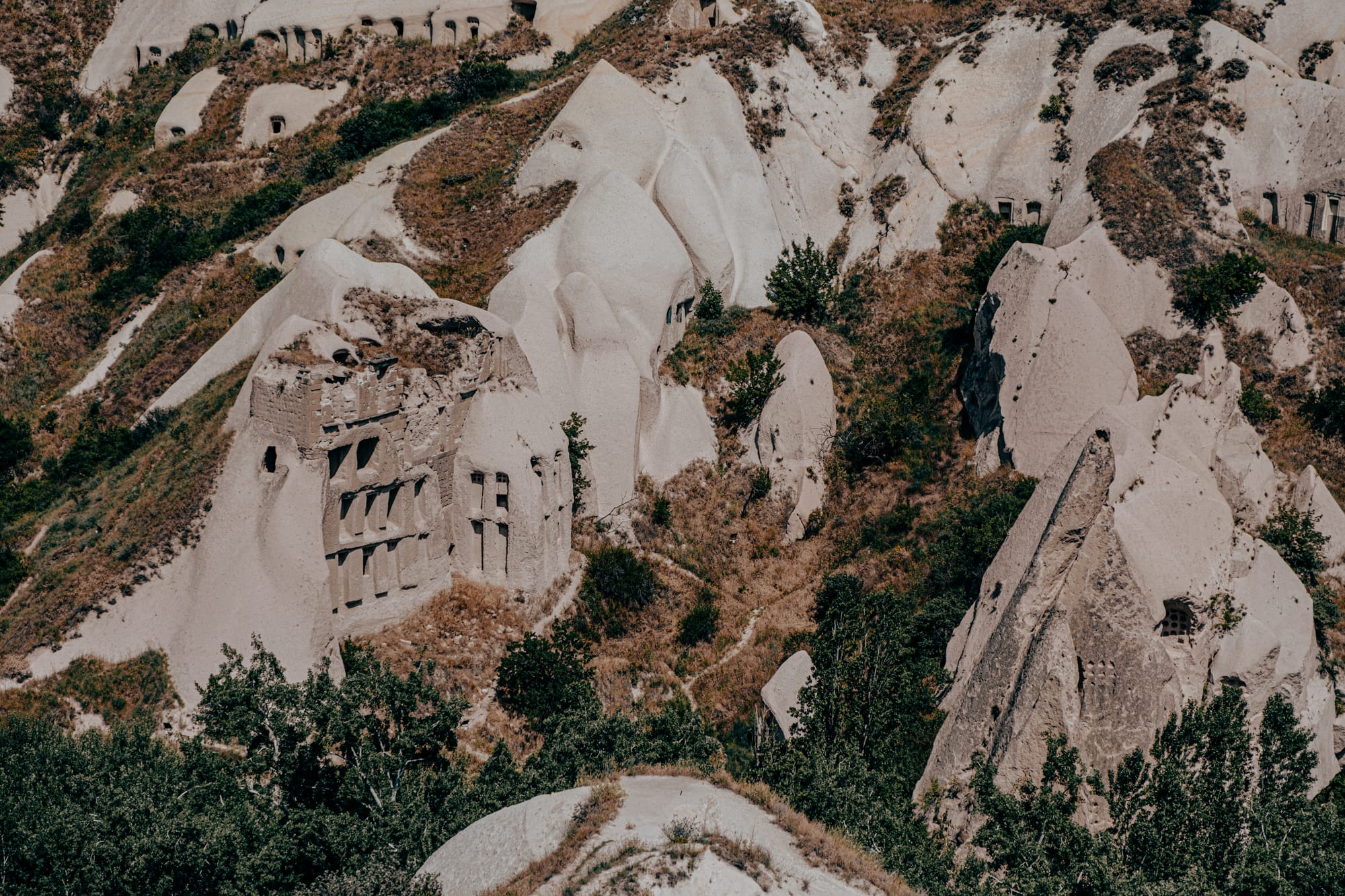
While industrial fertilizers have largely replaced this practice, the dovecotes remain as a testament to the resourcefulness of Cappadocia’s people and their deep connection to the land. Even now, pigeons can be seen fluttering through the valley, resting in crevices and bringing life to the dramatic rockscape.
The view from the lookout point
Standing at Pigeon Valley Lookout, you’re rewarded with one of Cappadocia’s most cinematic scenes. The valley stretches out in a tapestry of rolling ridges, deep-cut gullies, and sculpted fairy chimneys that catch the shifting light throughout the day. The volcanic tuff layers reveal subtle changes in color—creamy whites, warm beiges, and hints of rose—making the landscape almost painterly.
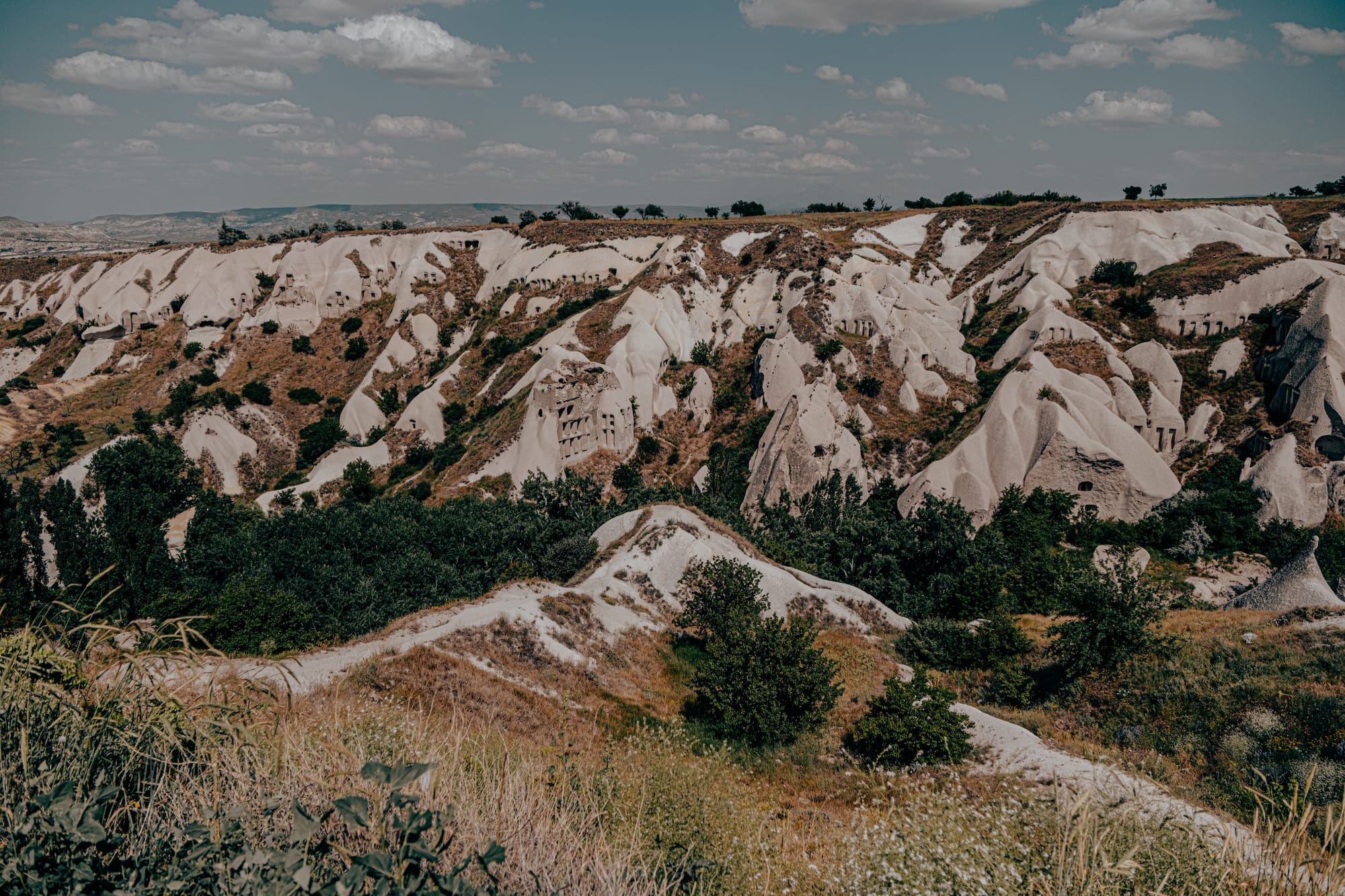
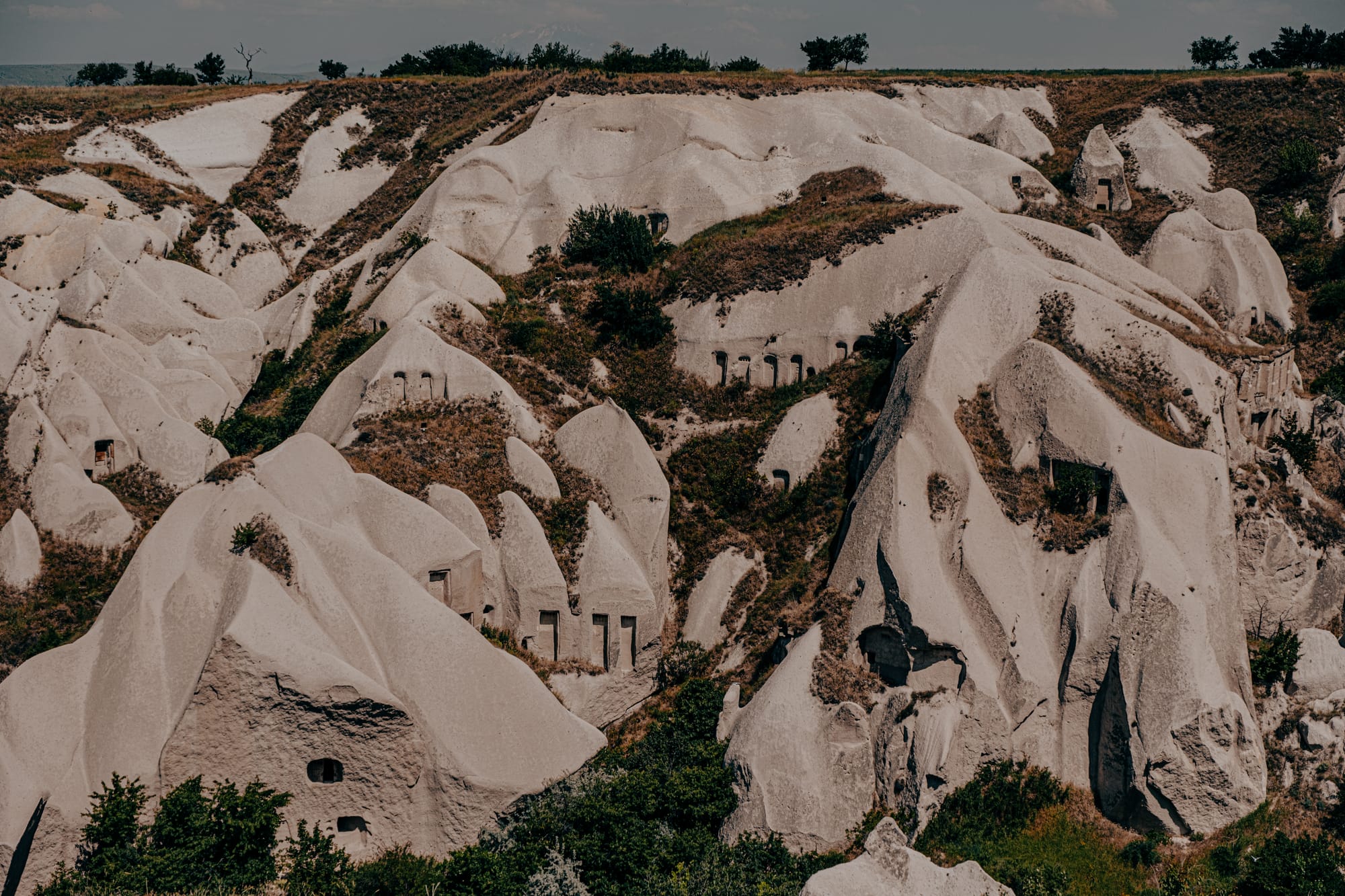
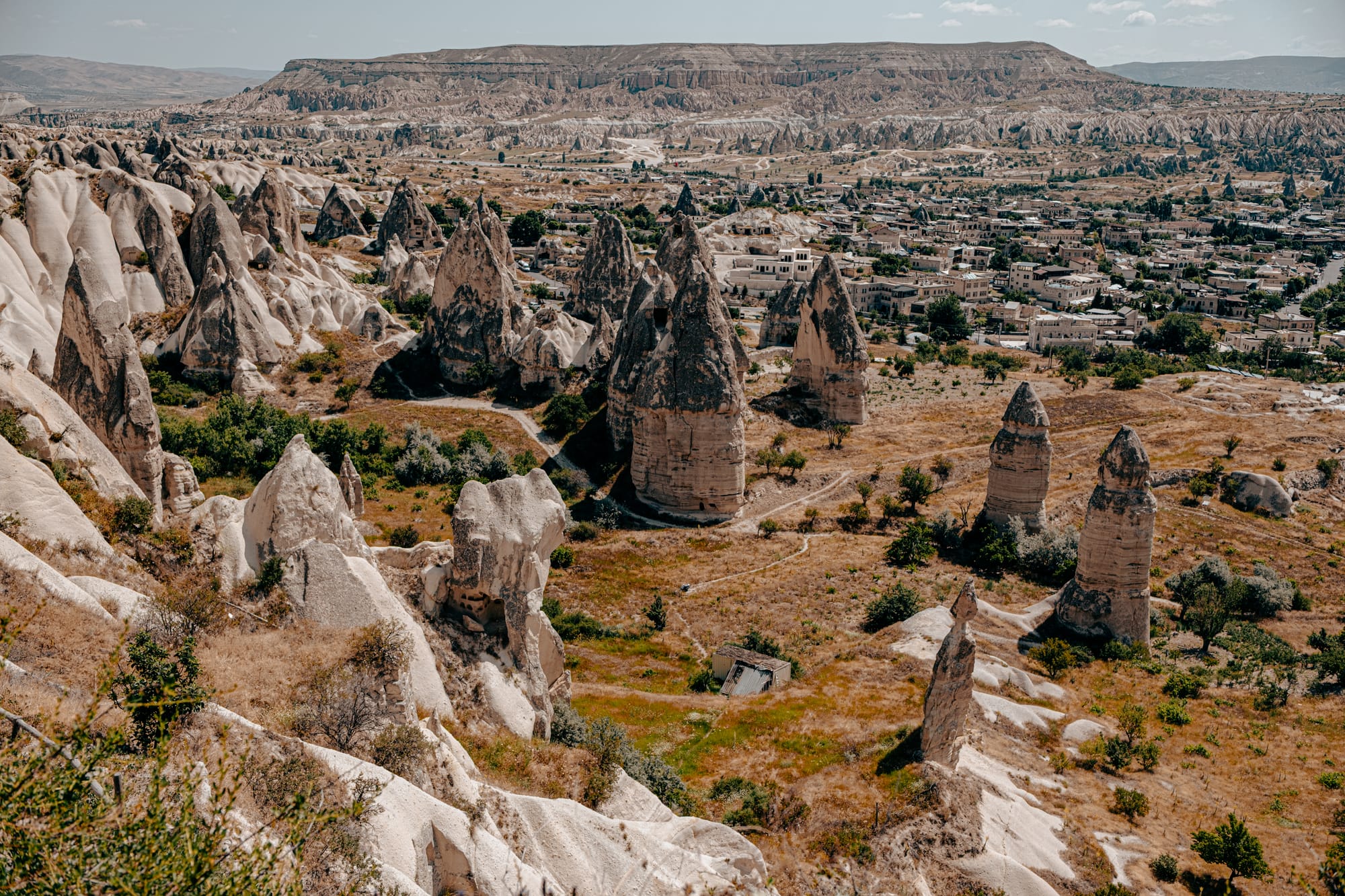
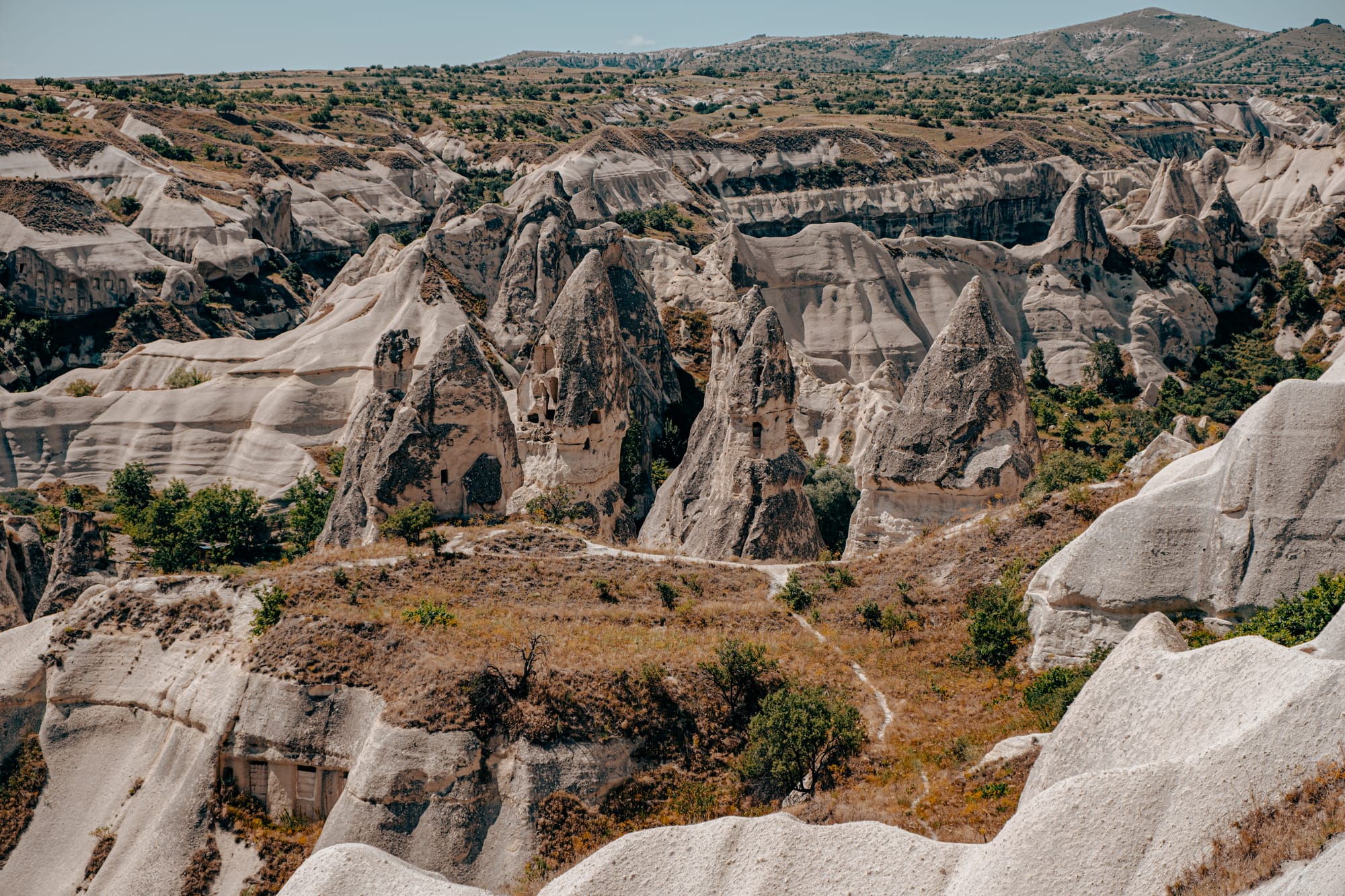
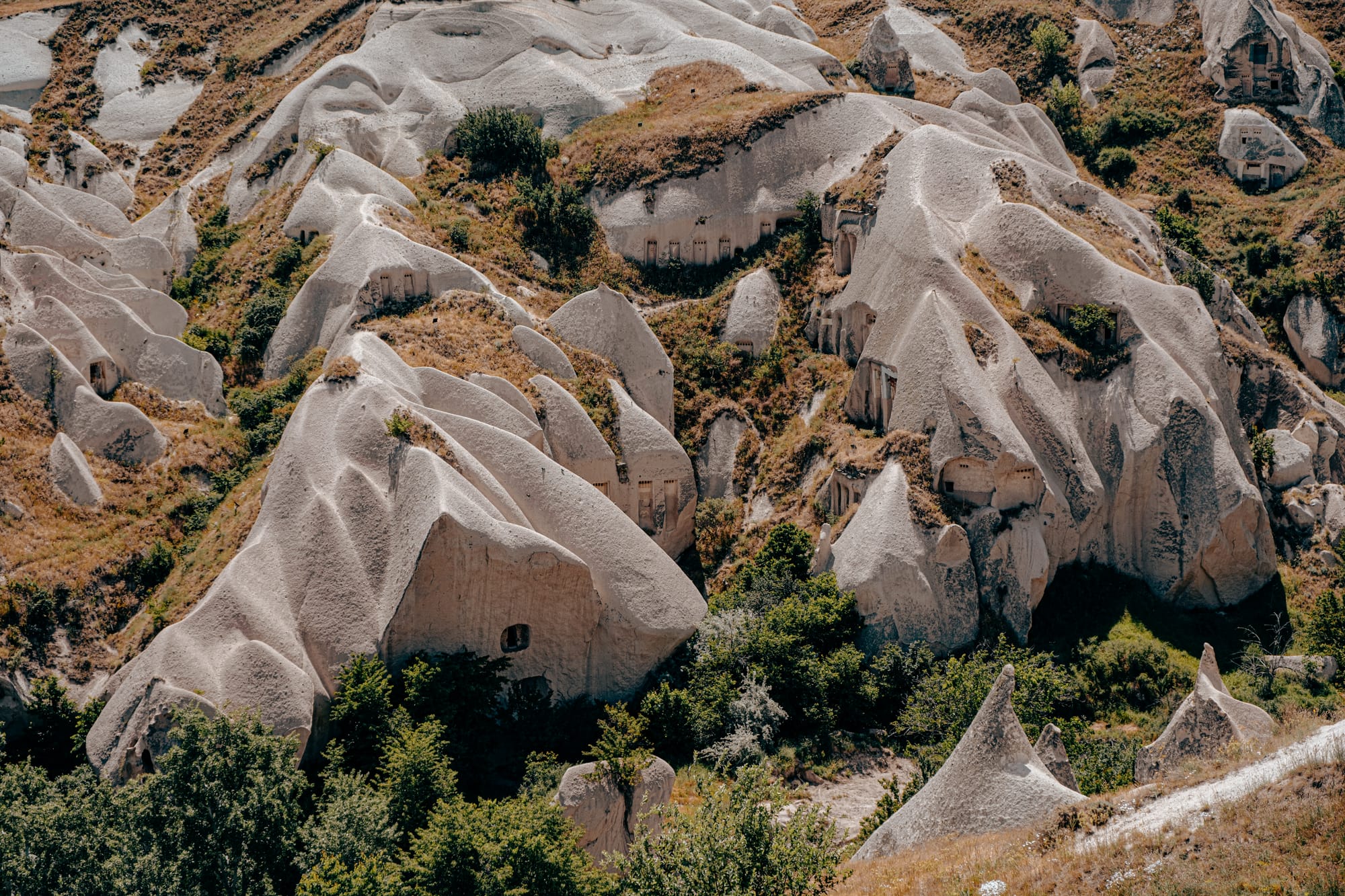
Unique rock formations and ancient pigeon houses carved into the cliffs of Cappadocia
From this vantage point, you can also see the imposing Uçhisar Castle in the distance, perched on the highest point in the region. Its silhouette is a reminder of Cappadocia’s strategic past, when natural fortresses were as much a part of survival as they were a part of daily life.
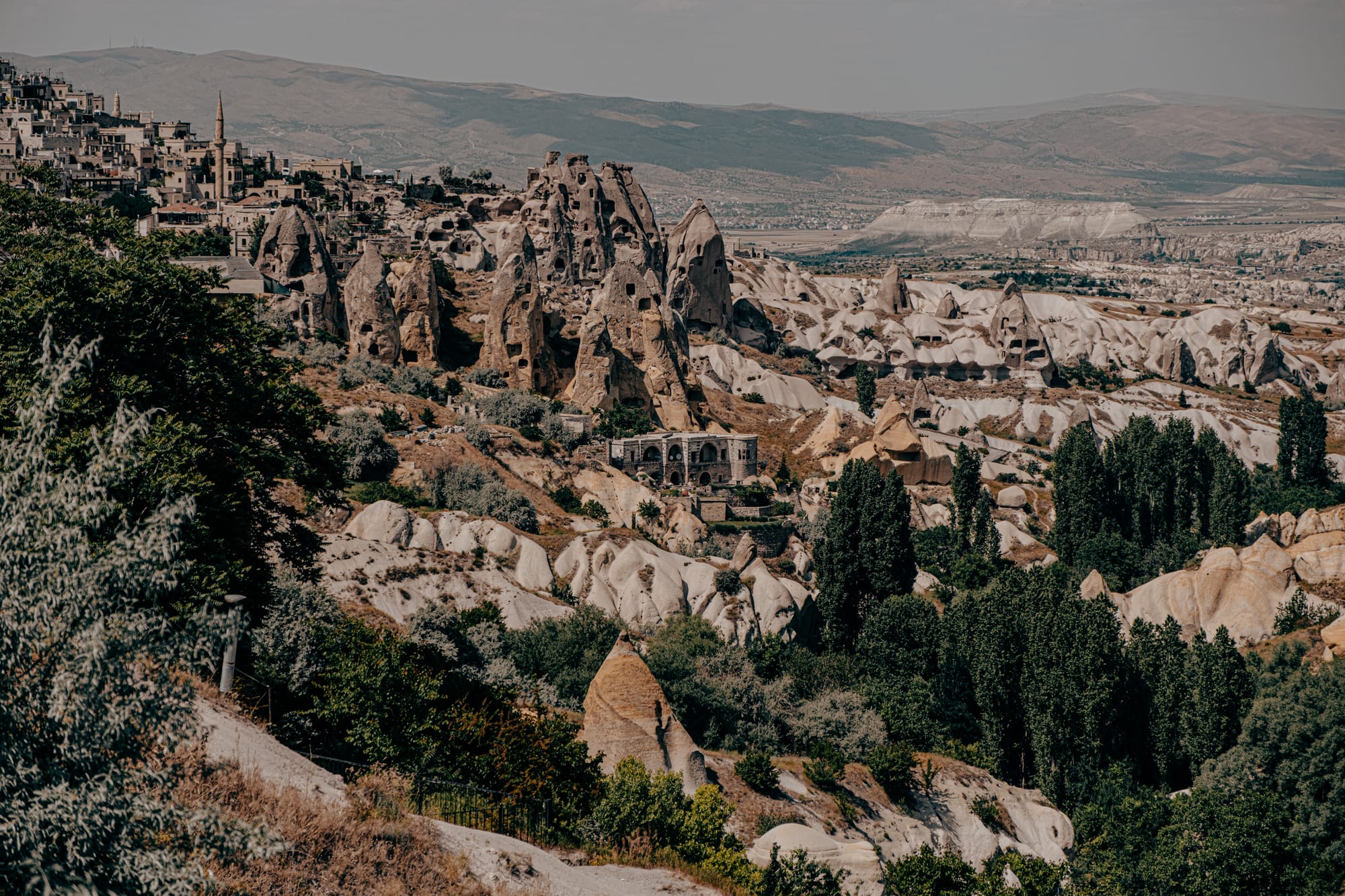
If you time your visit for early morning or late afternoon, the light adds even more depth to the contours of the rocks, and the scene feels almost otherworldly.
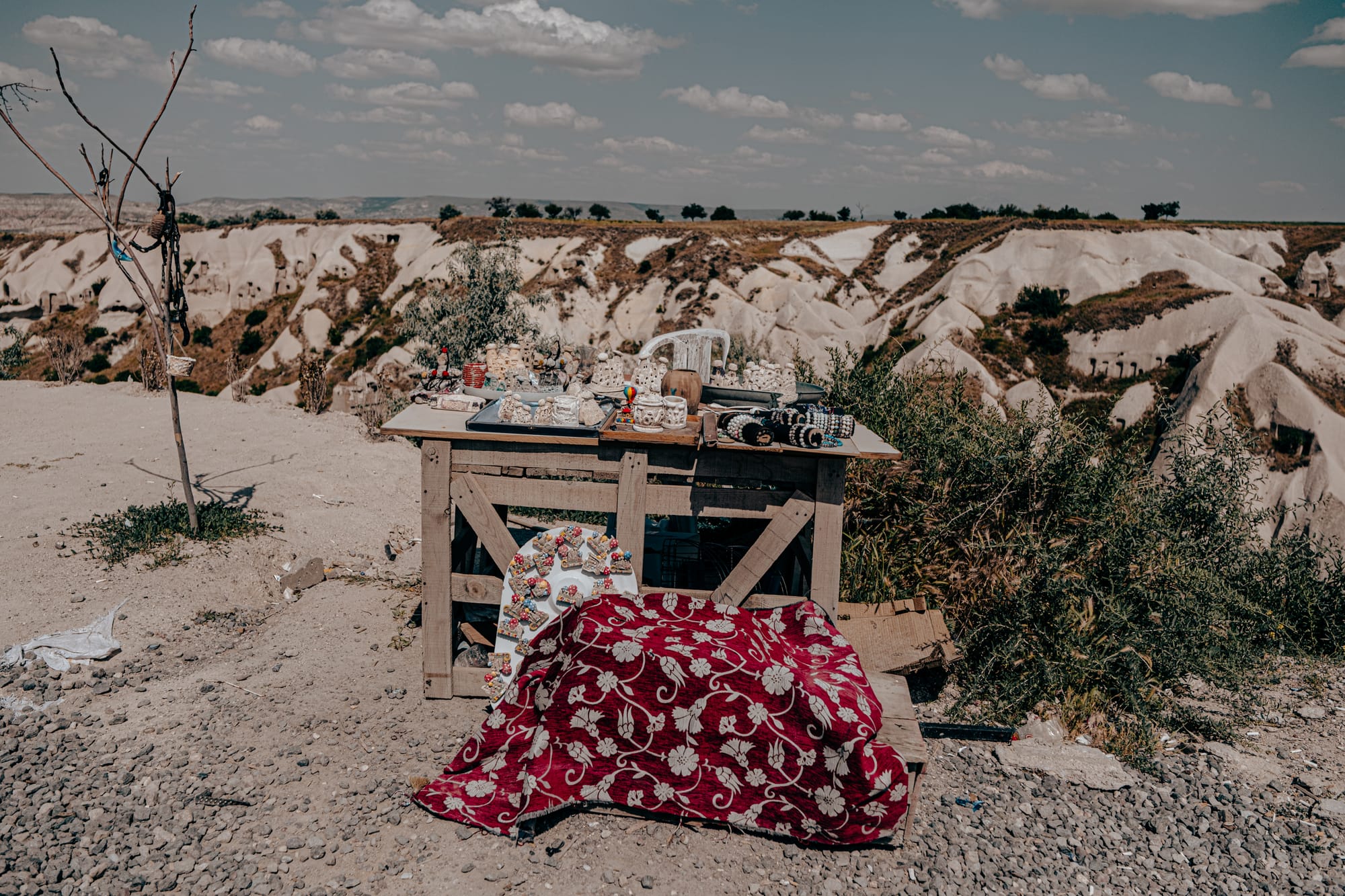
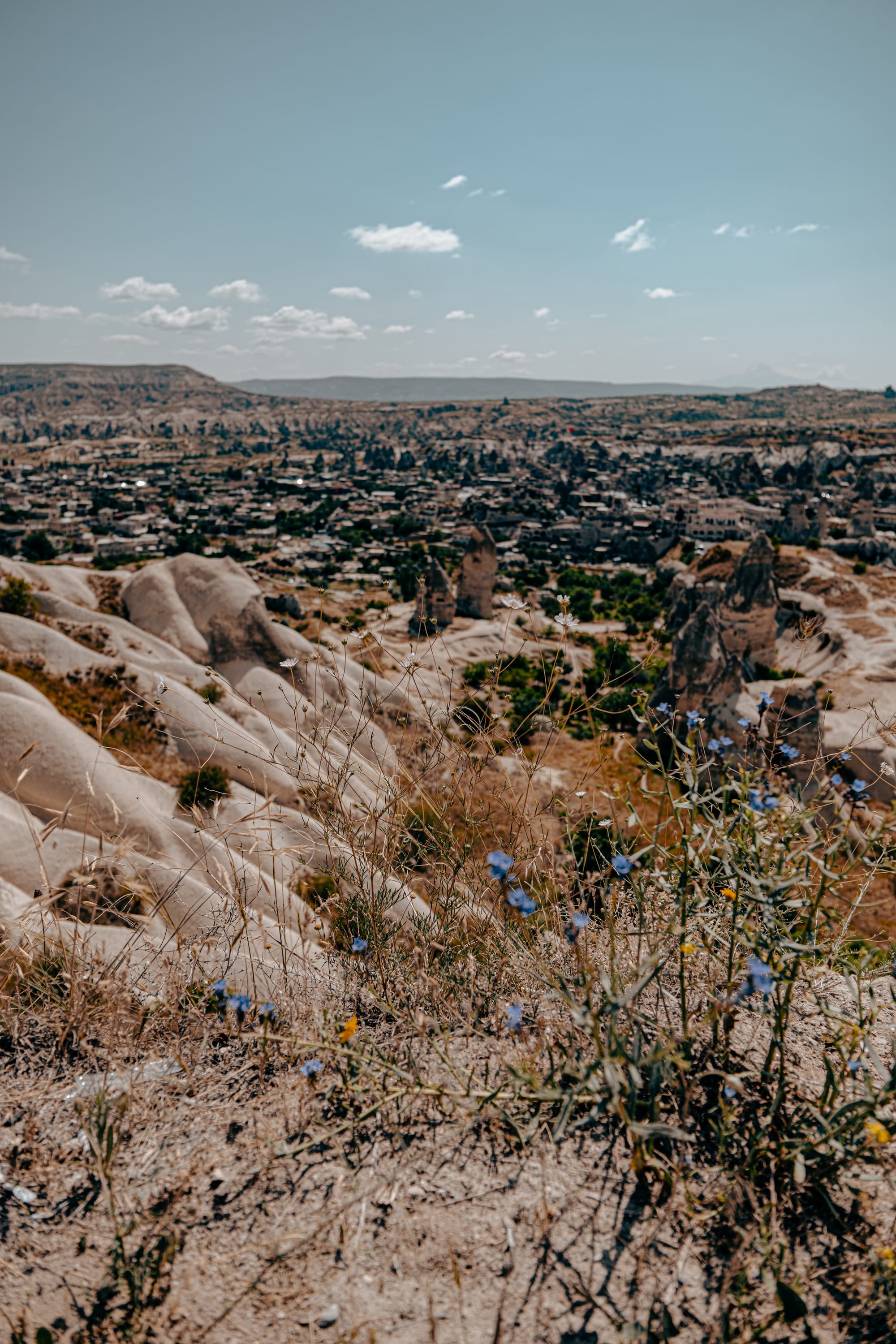
Local crafts for sale with panoramic views over Cappadocia’s valleys and villages
Photographers will find endless opportunities here, from wide panoramas to close-up shots of the dovecotes and rock textures.
A note on animal tourism
As breathtaking as the viewpoint is, it comes with a sobering reminder of the complexities of tourism in Cappadocia. Around the Pigeon Valley Lookout, you’ll often see camels and horses tied up, offered for rides to visitors.
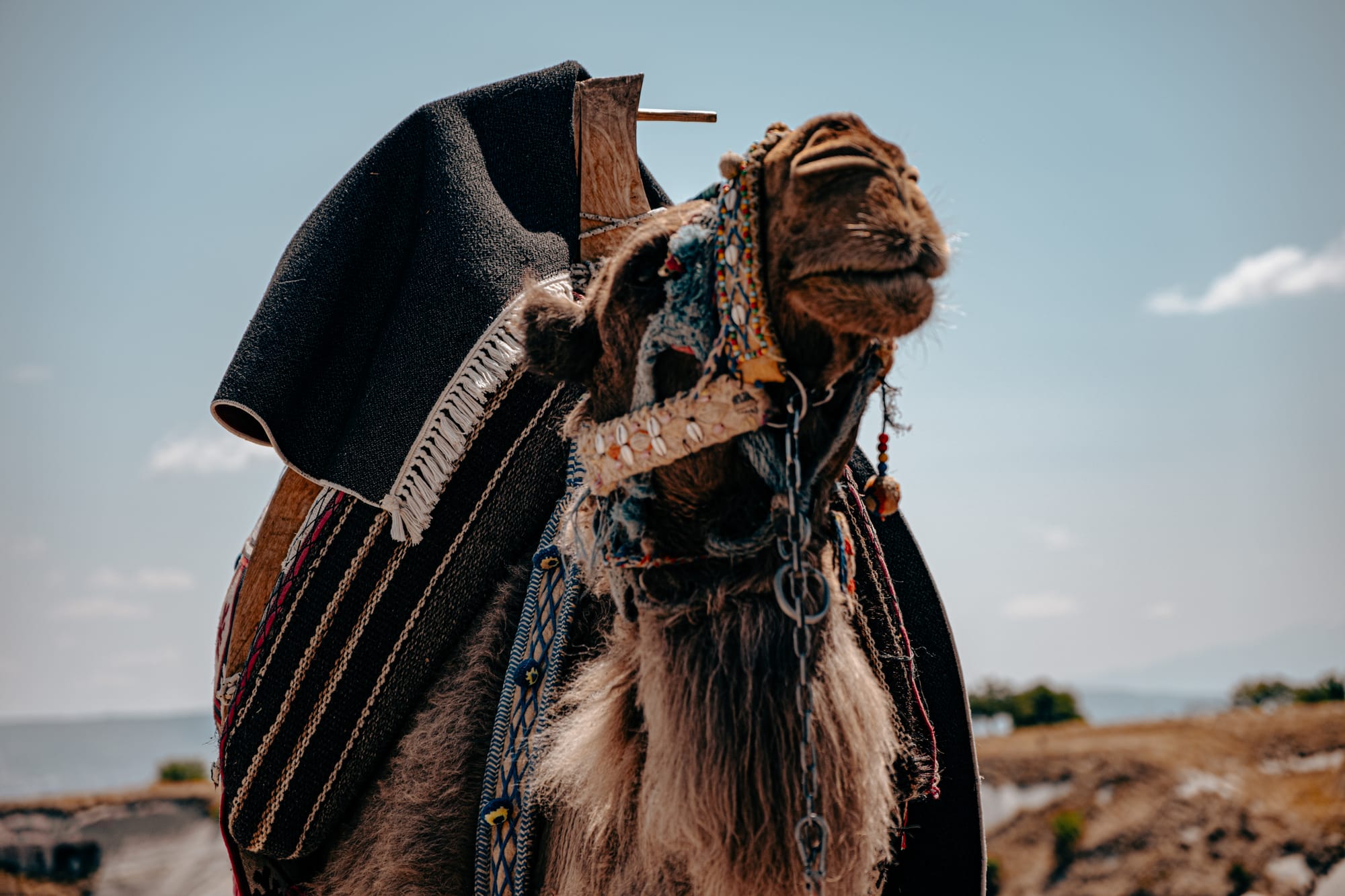
While these animals are part of the visual landscape, the reality is that they typically spend their days tethered in the sun, waiting for customers.
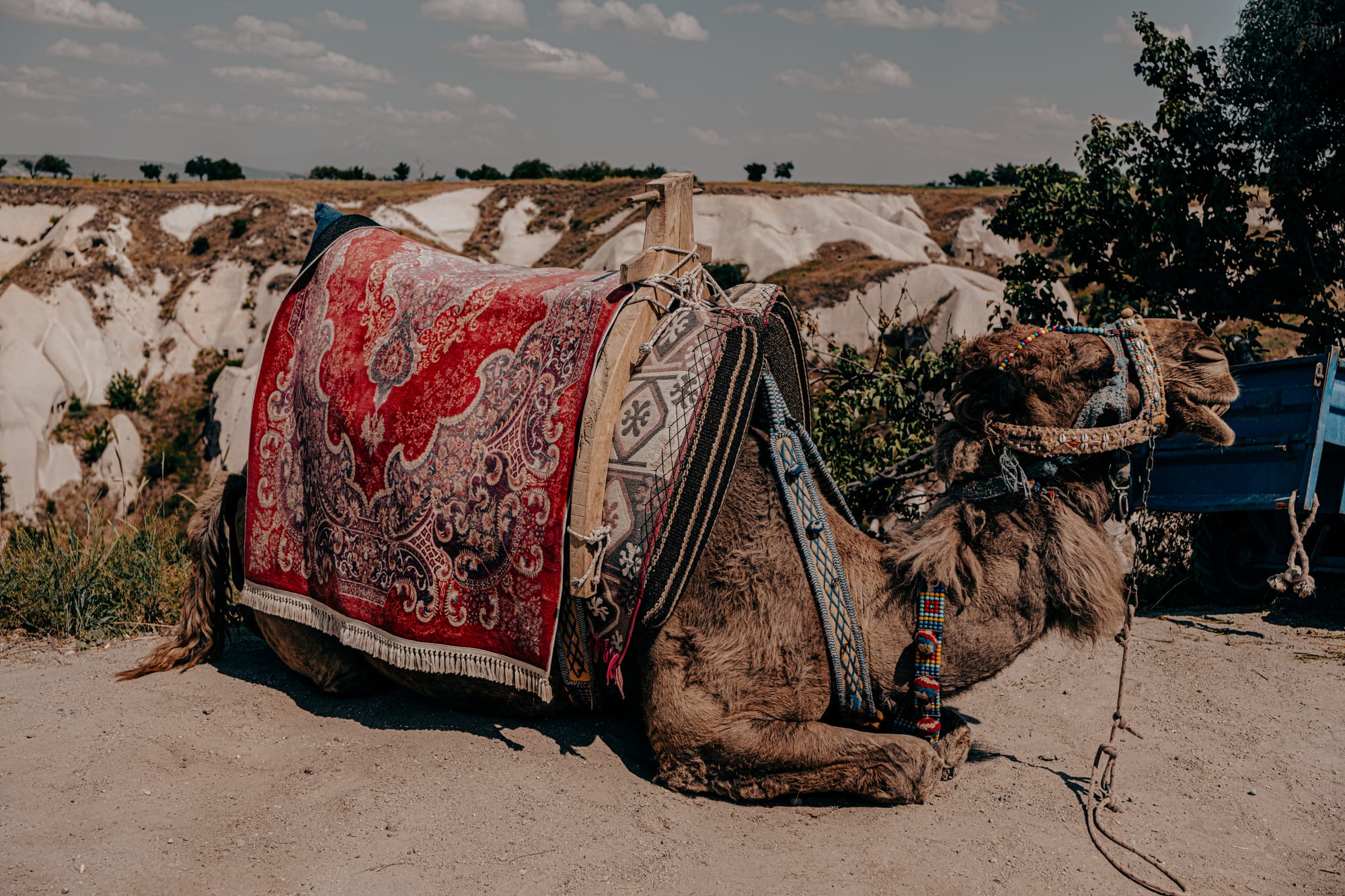
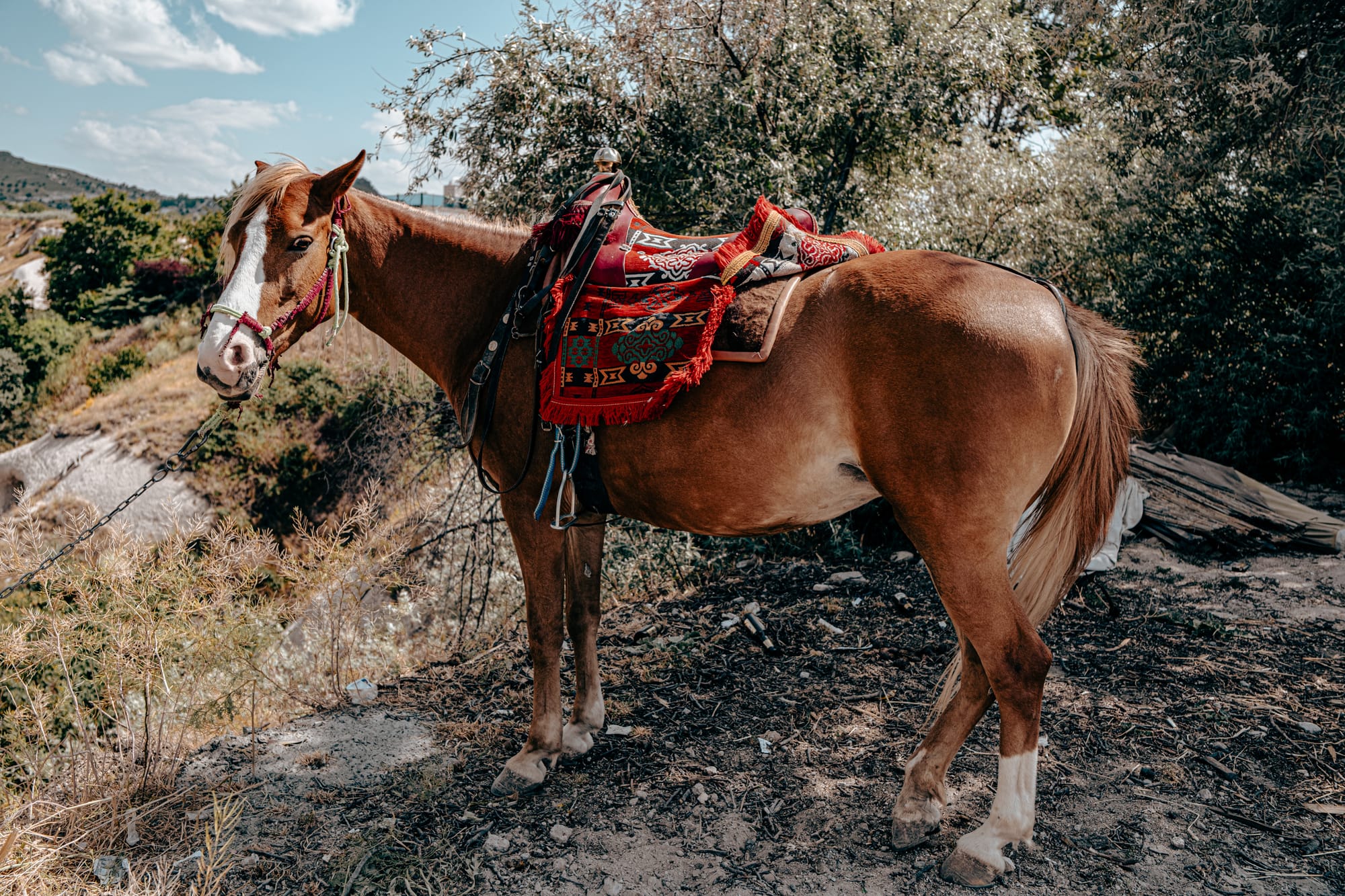
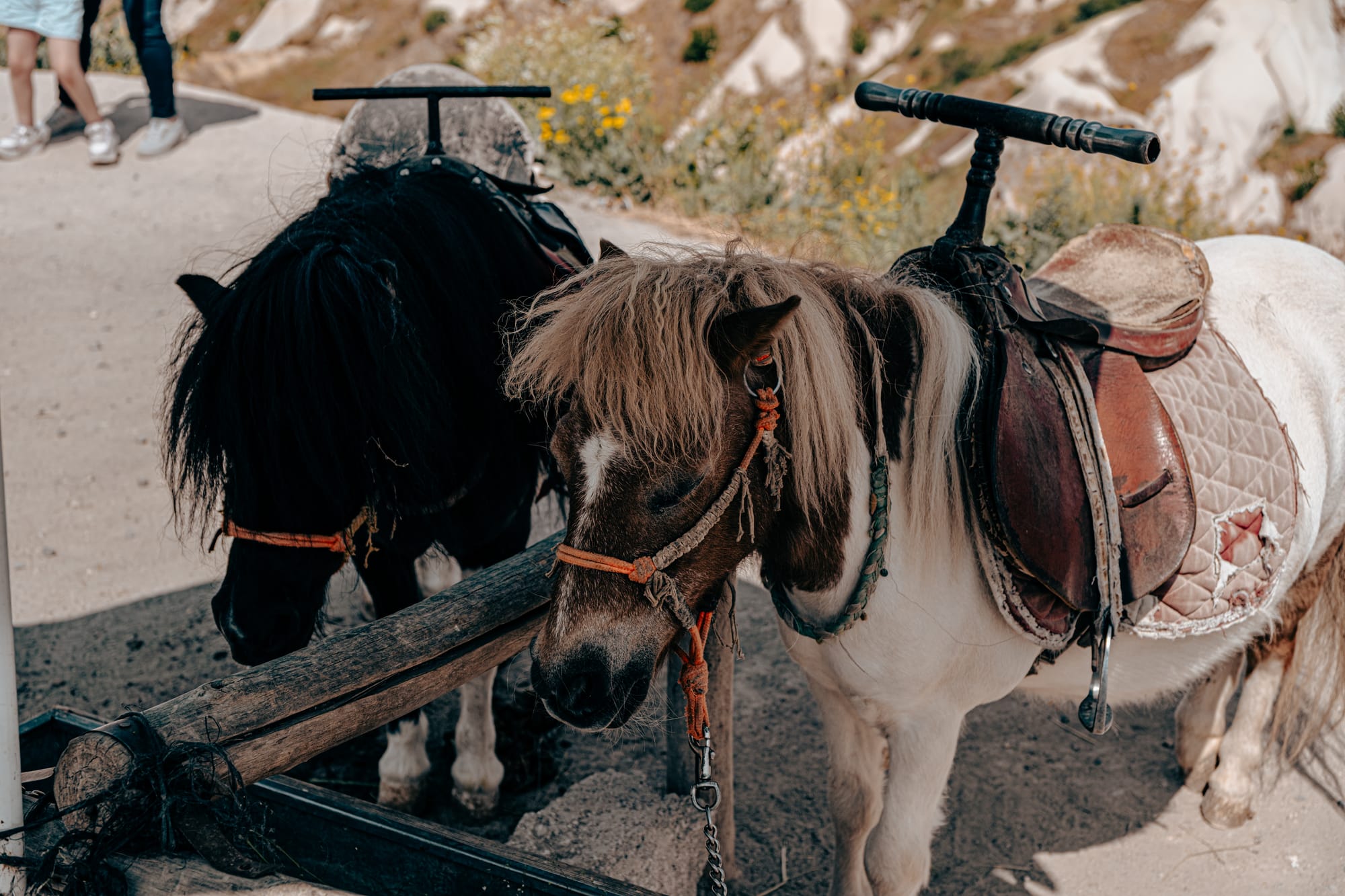
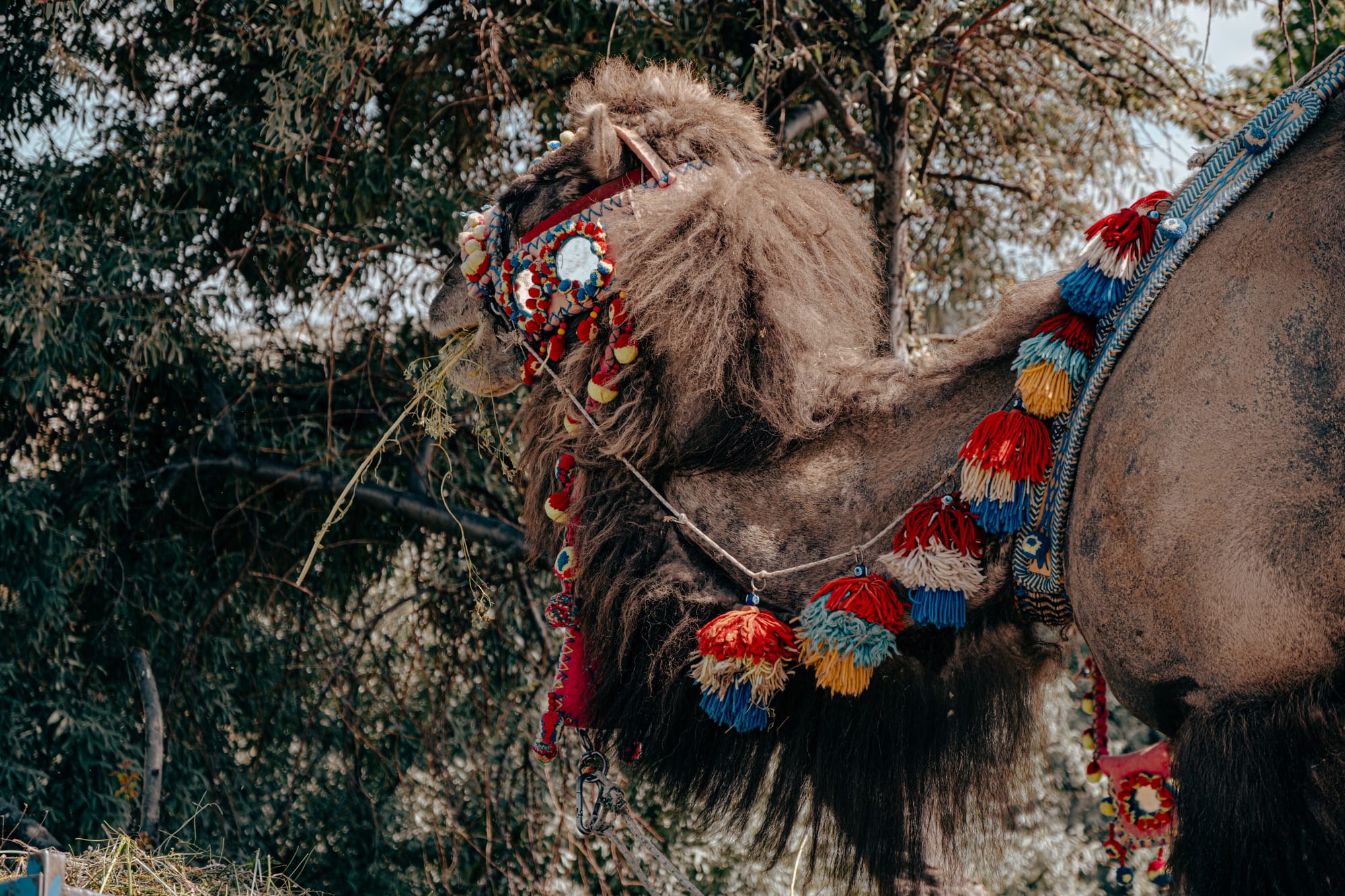
Animals adorned in colorful gear waiting for tourist rides in Cappadocia
If you’re mindful of animal welfare, it’s worth considering alternatives—such as simply admiring the animals from a distance and supporting local vendors through other purchases.
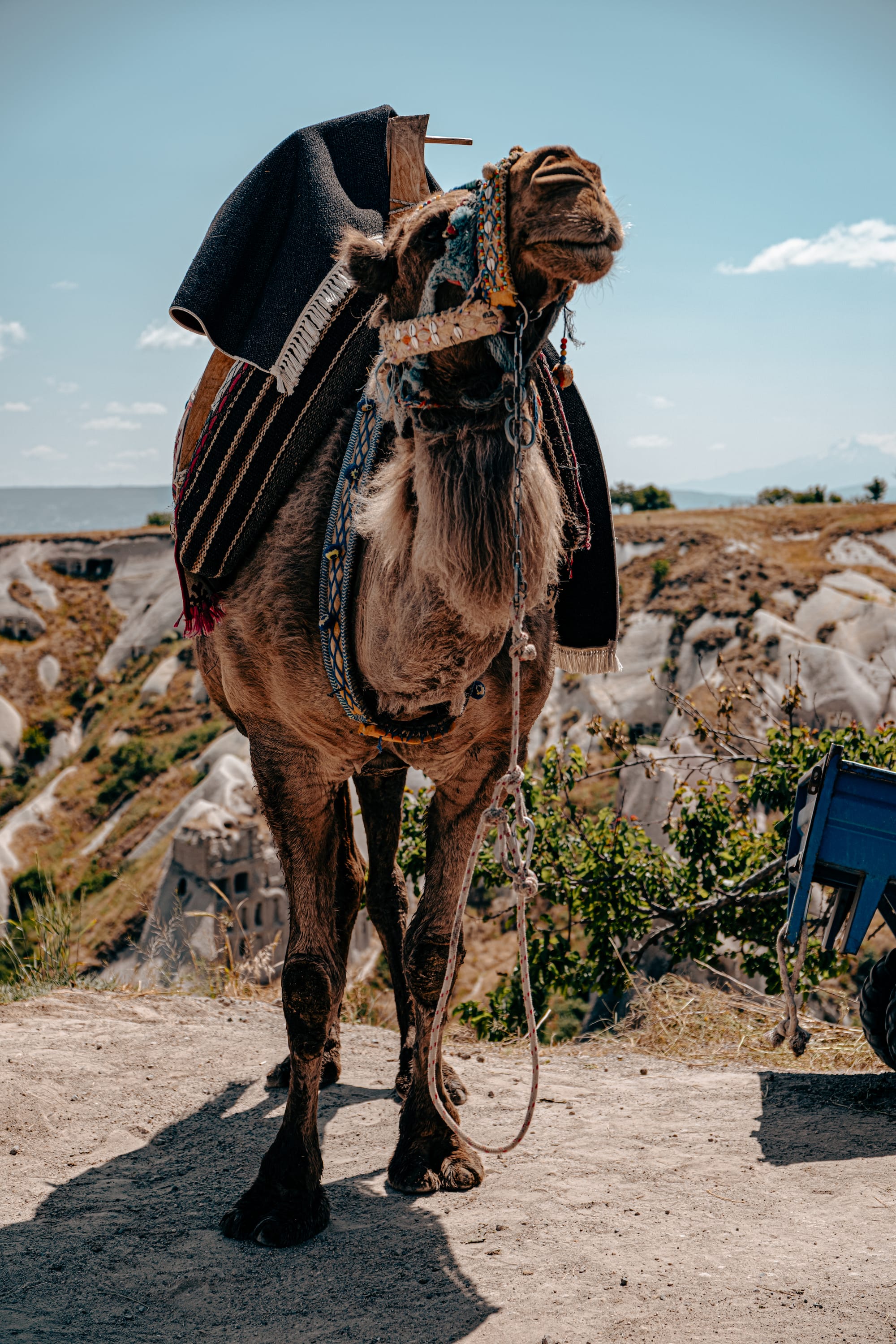
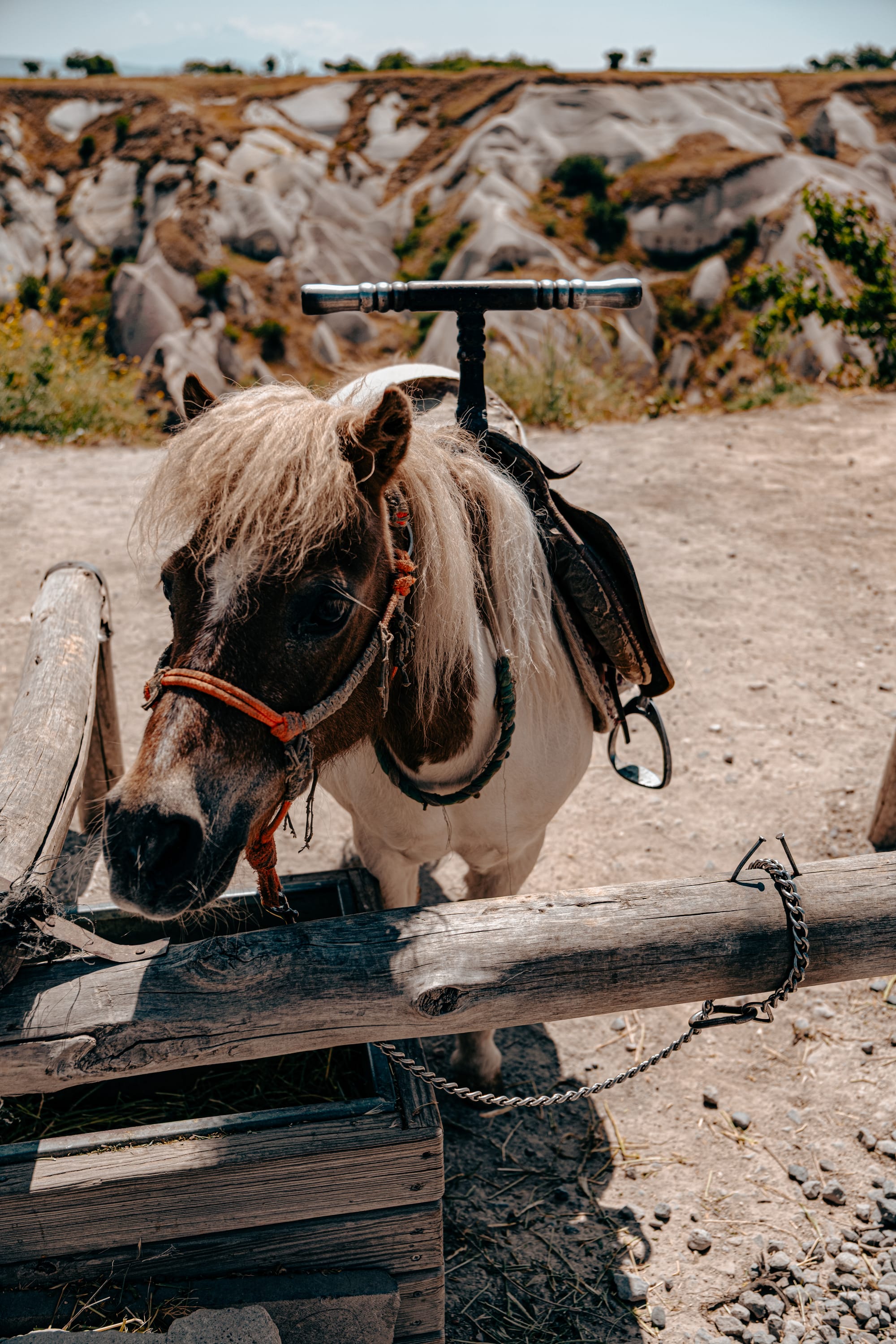
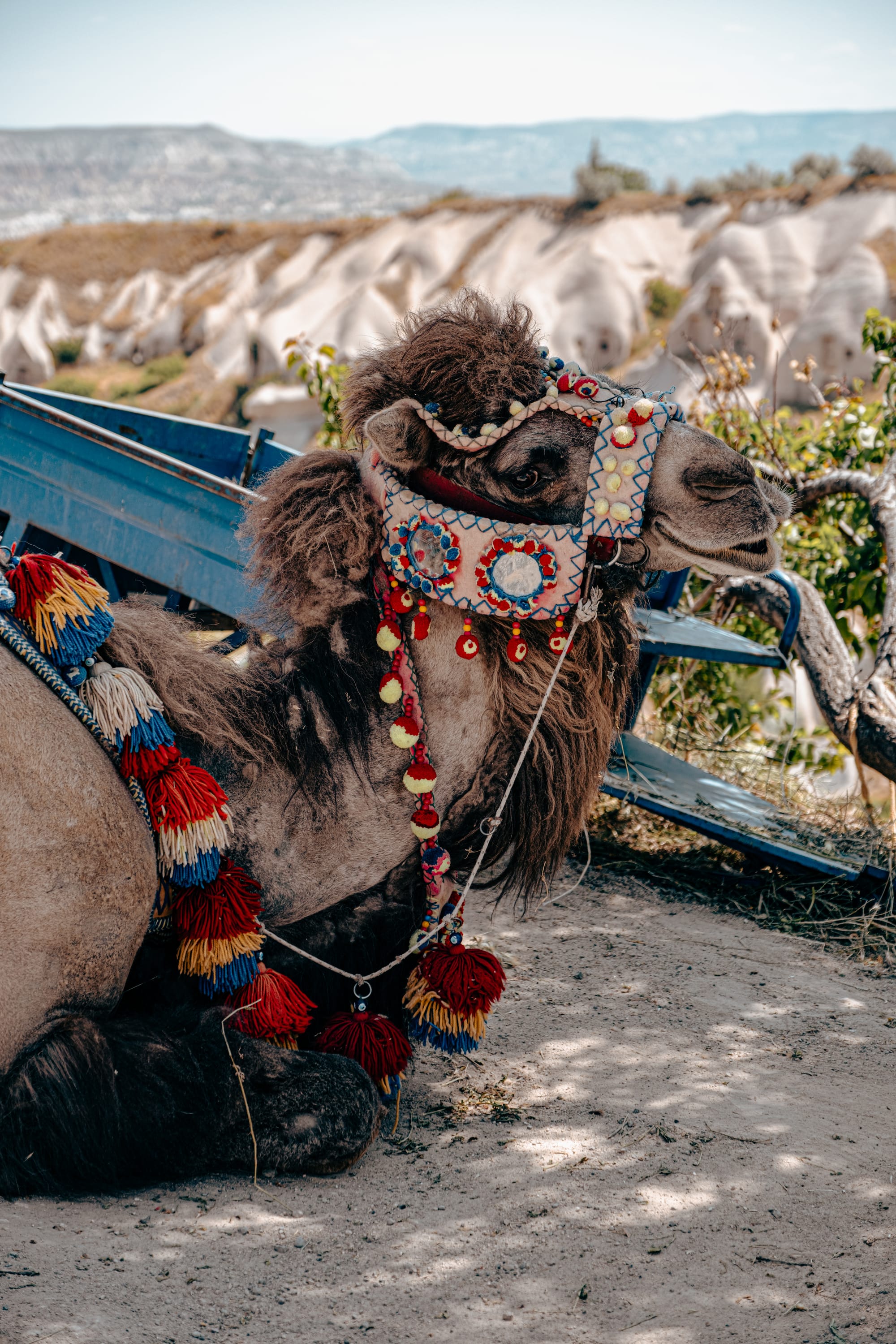
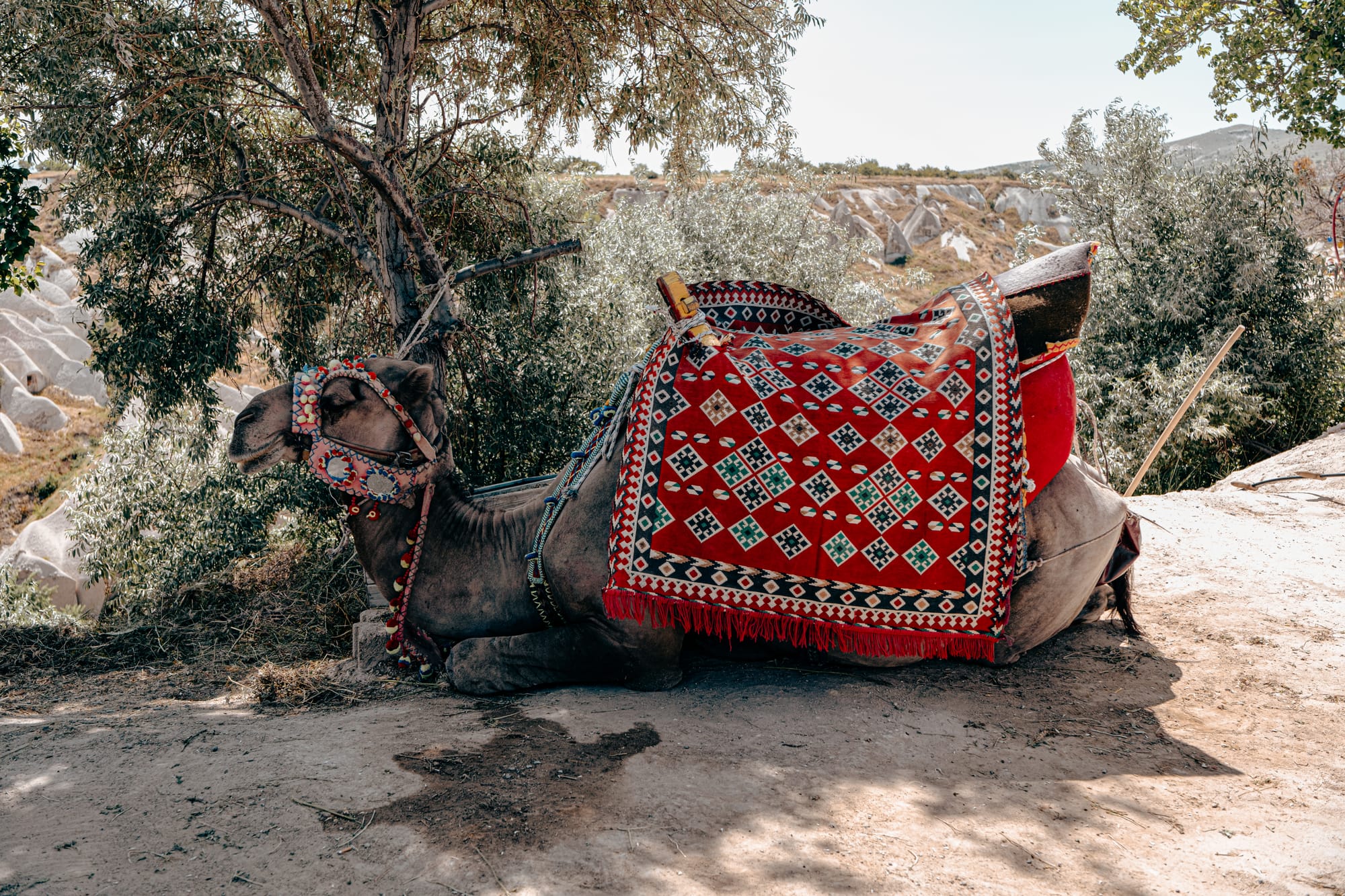
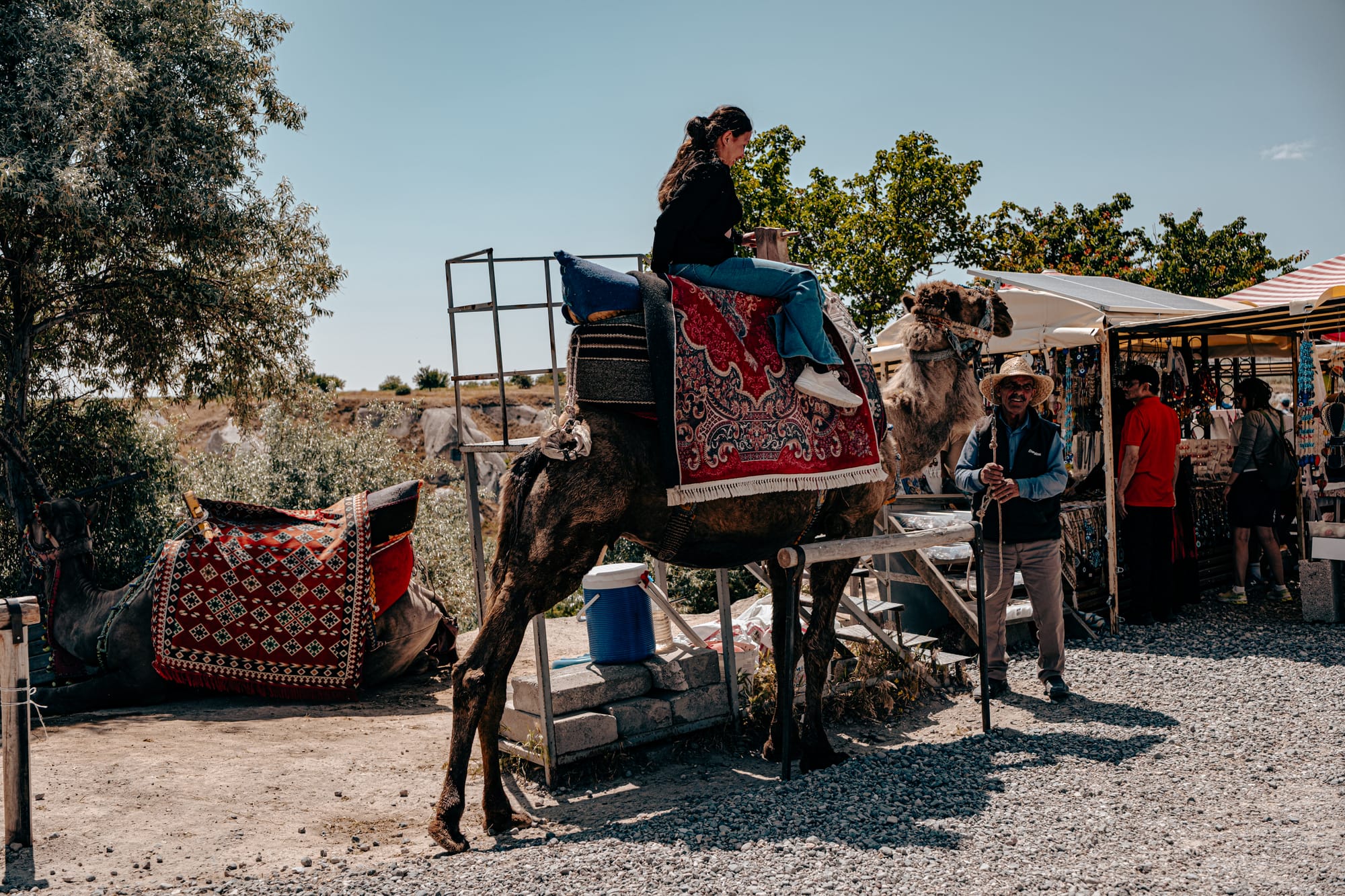
Cappadocia offers so many ways to connect with its culture and landscapes that don’t involve exploiting animals.
Hiking through Pigeon Valley
For those with the time and energy, hiking through Pigeon Valley is an unforgettable way to experience its beauty up close. The trail between Göreme and Uçhisar takes you through orchards, past rock-hewn dovecotes, and along the valley floor, where the scale of the formations becomes even more impressive.
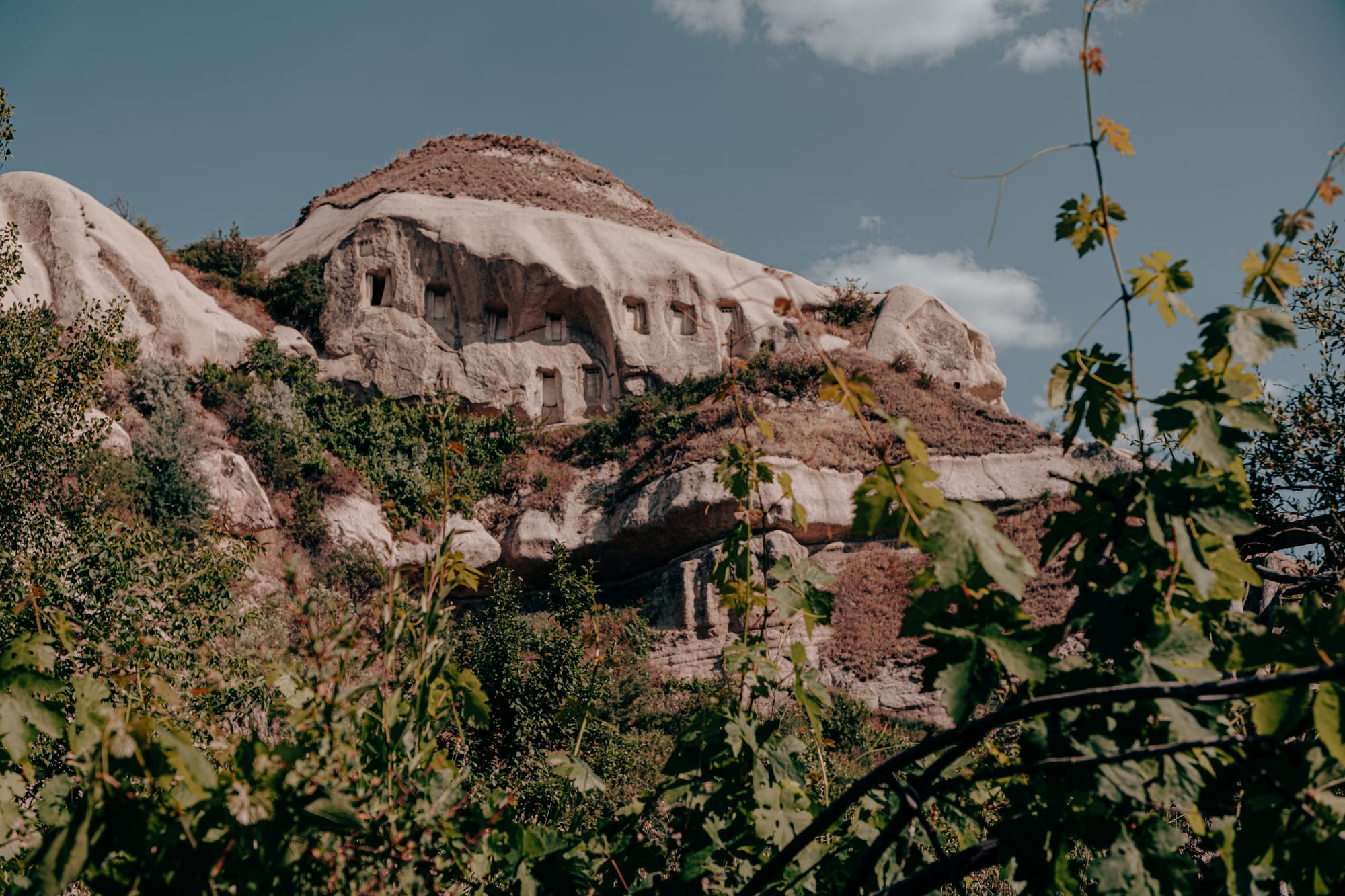
This route can be linked with nearby White, Honey, and Love Valleys, creating a multi-hour trek that weaves together some of Cappadocia’s most iconic landscapes. The paths are generally well-trodden but can be uneven, so good walking shoes are recommended.
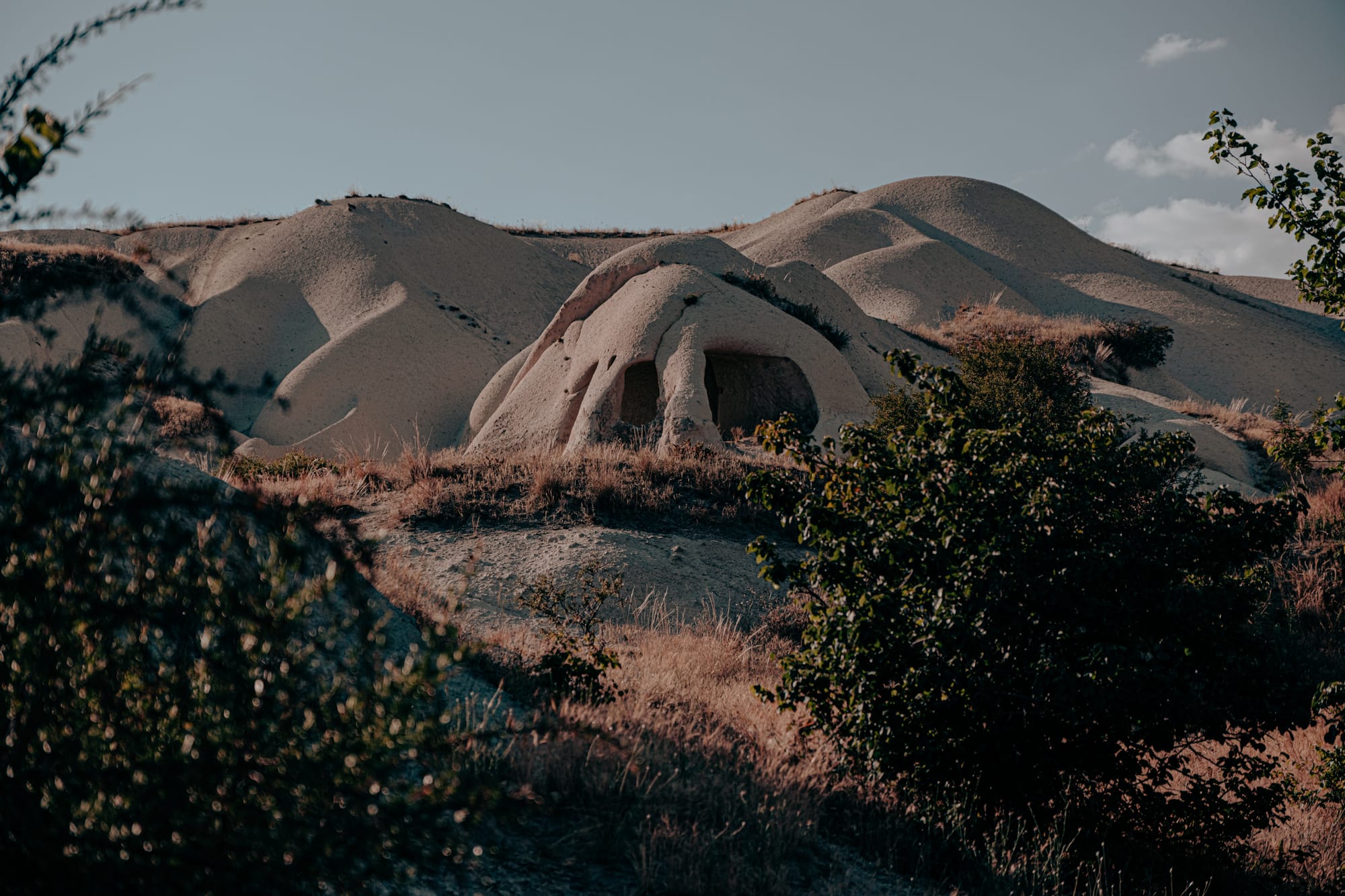
If you’re visiting in the hotter months, aim for an early start and bring plenty of water. The valley’s curves offer occasional shade, but much of the trail is exposed to the sun. Read our full post on it here.
Why it’s worth including on your trip
Pigeon Valley combines natural beauty, cultural history, and panoramic views in a way that few other spots in Cappadocia do. It’s a chance to connect with the region’s agricultural past, appreciate its geological artistry, and reflect on the evolving relationship between people, animals, and the land.
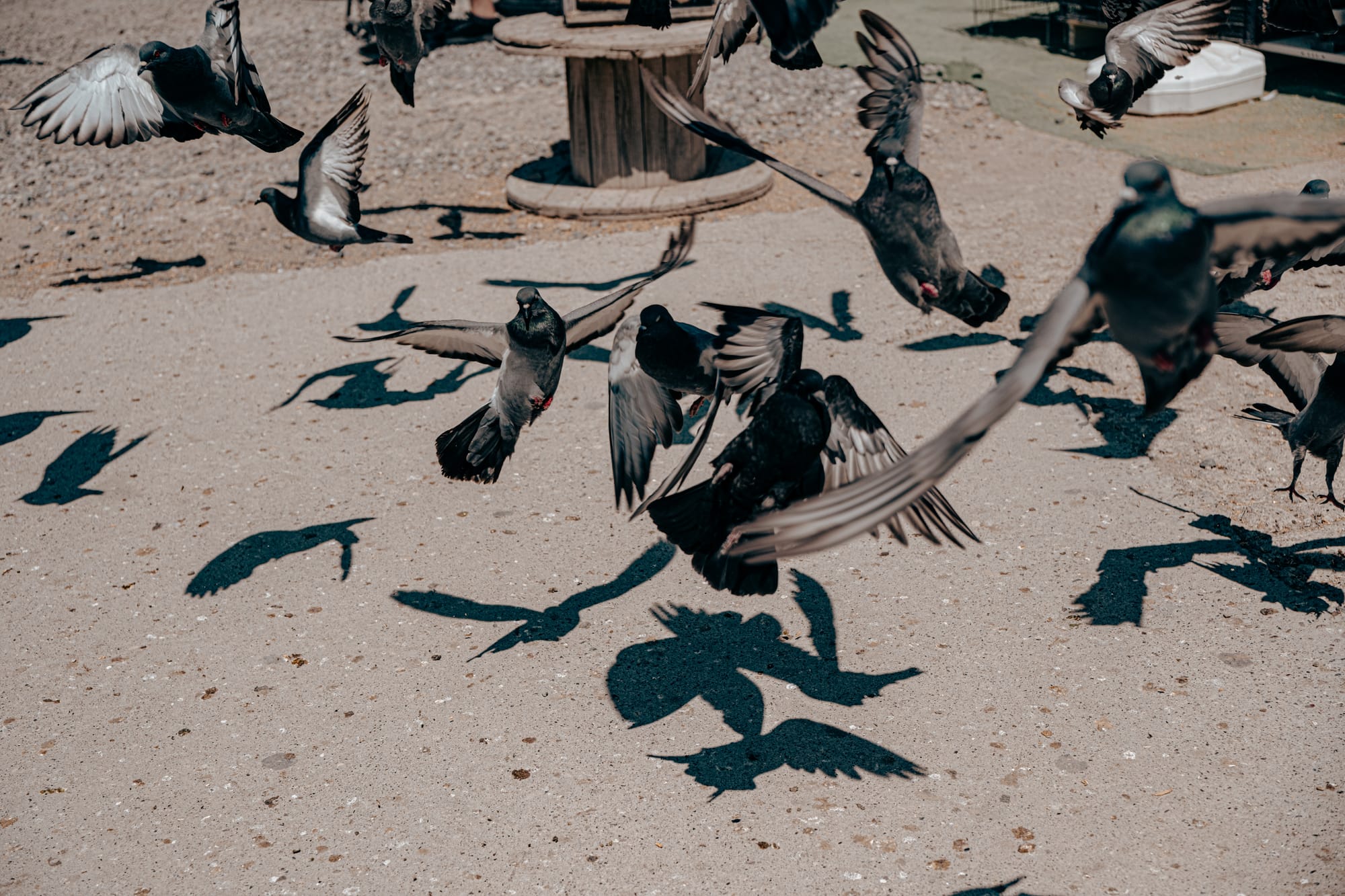
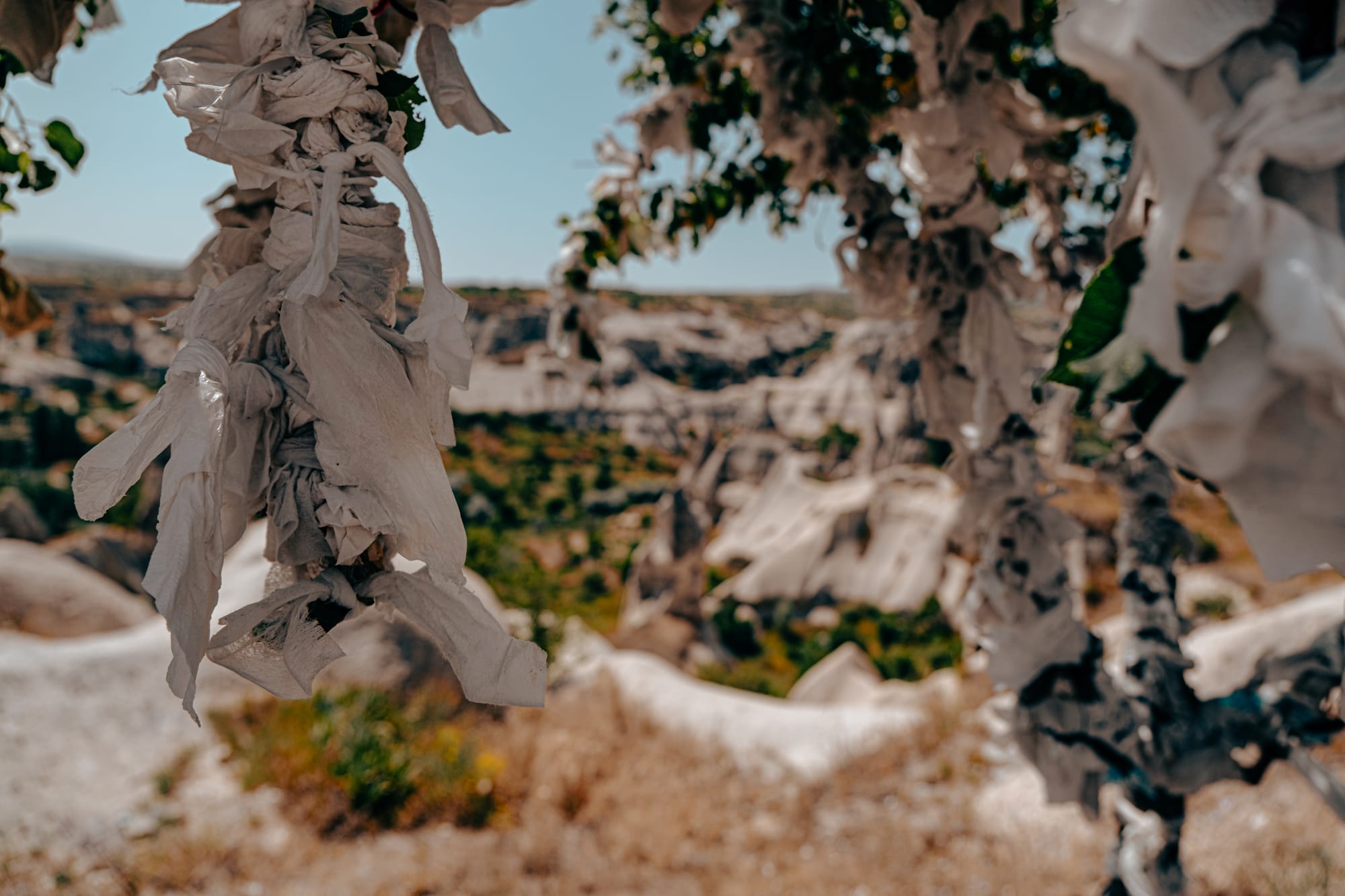
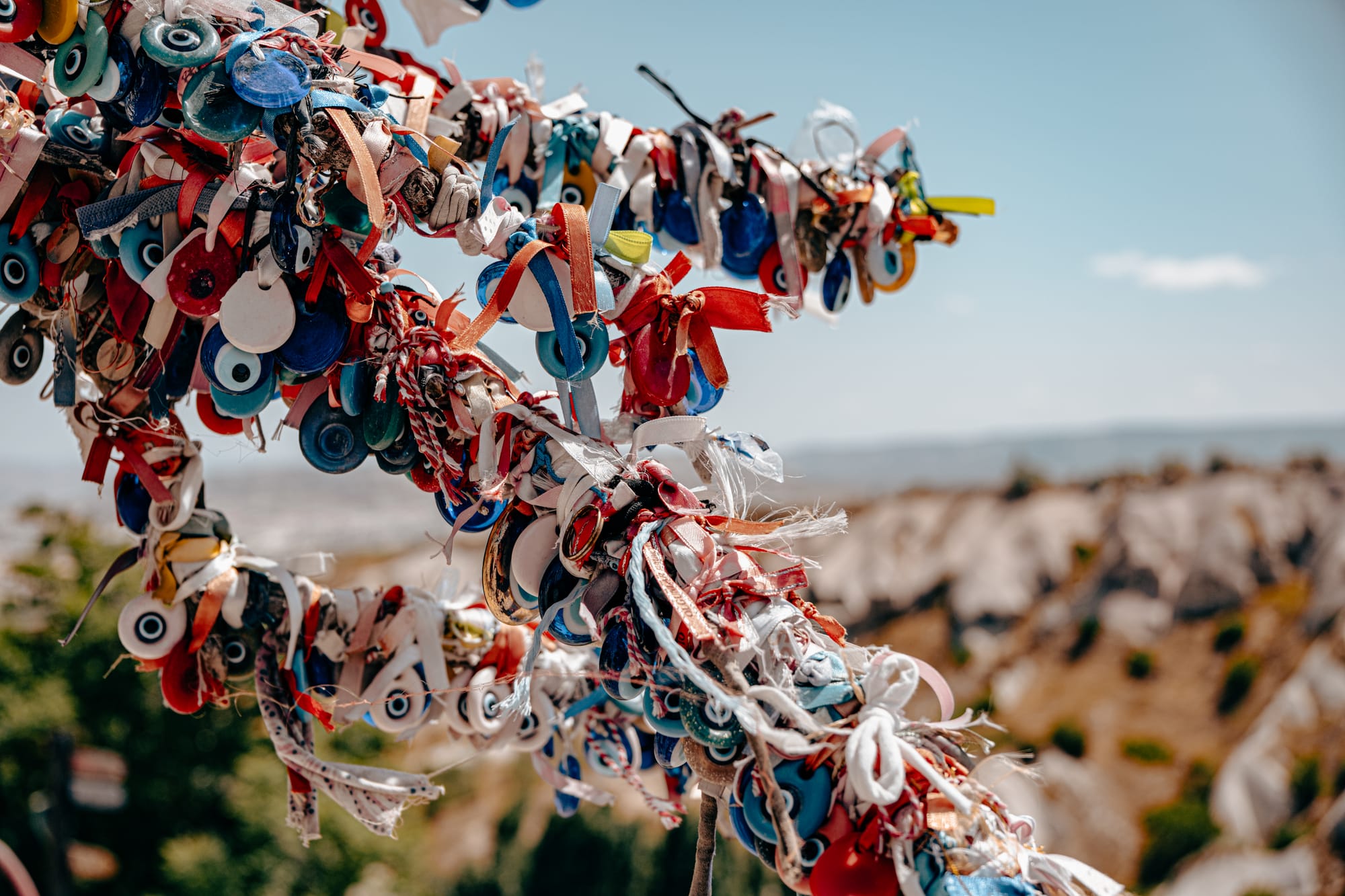
Wishing trees adorned with fabric ties and evil eye charms overlooking Pigeon Valley
Whether you visit as a quick stop on a guided itinerary or as part of a longer hiking route, it’s a place that leaves a lasting impression.
For the most seamless experience, consider booking the Cappadocia Green Tour, which includes Pigeon Valley along with other must-see destinations. And if you’re inspired to lace up your hiking boots, don’t miss our detailed guide to hiking Pigeon, White, Honey, and Love Valleys for an even deeper exploration of this magical region.






